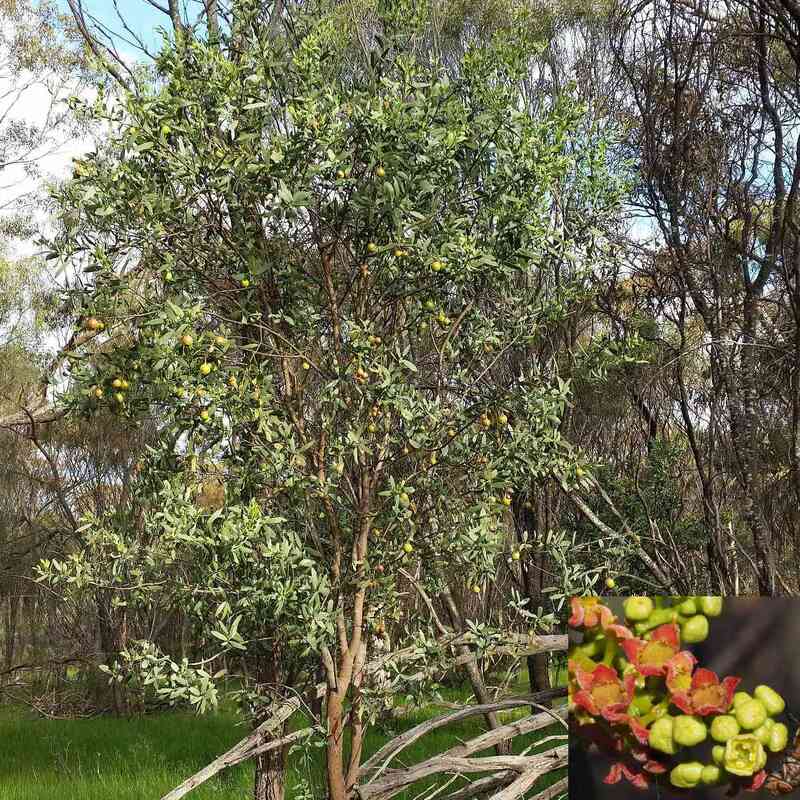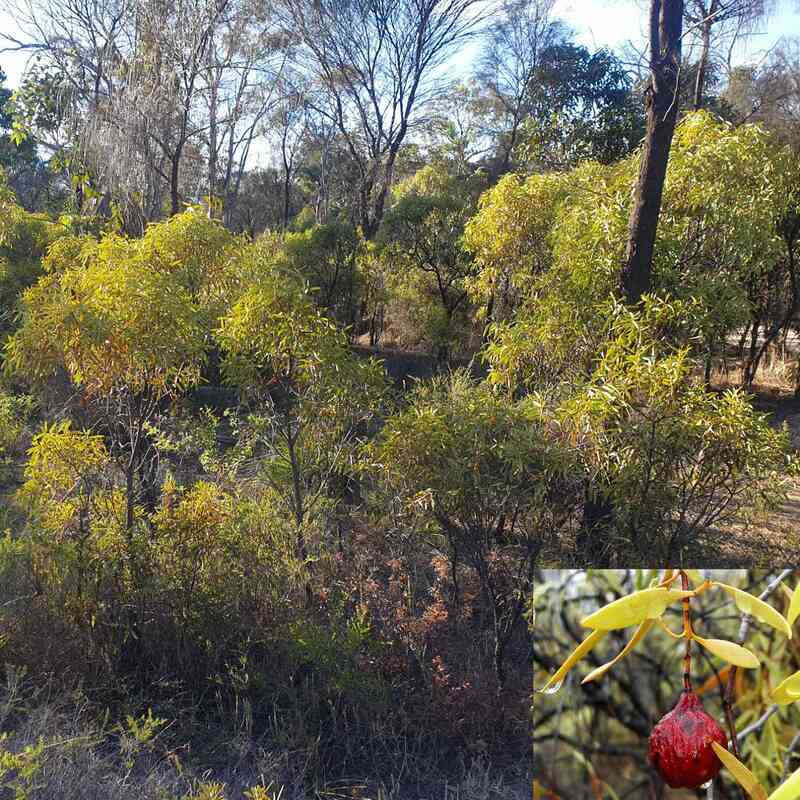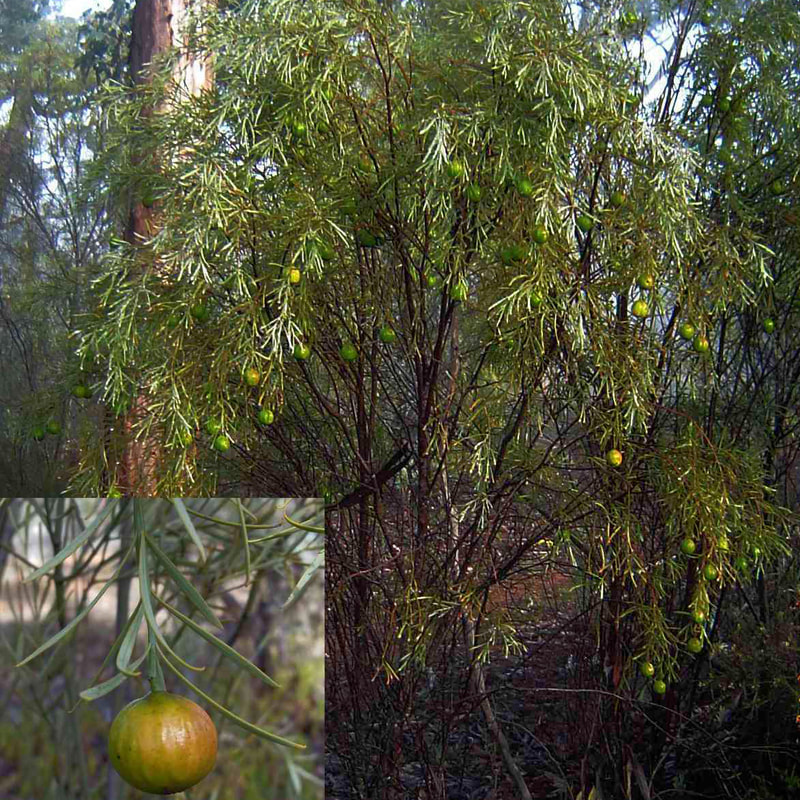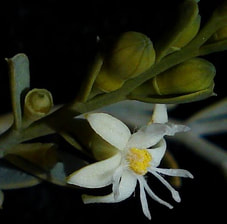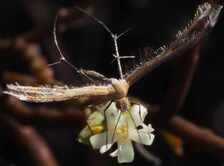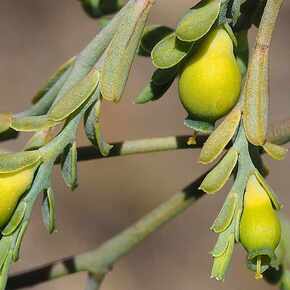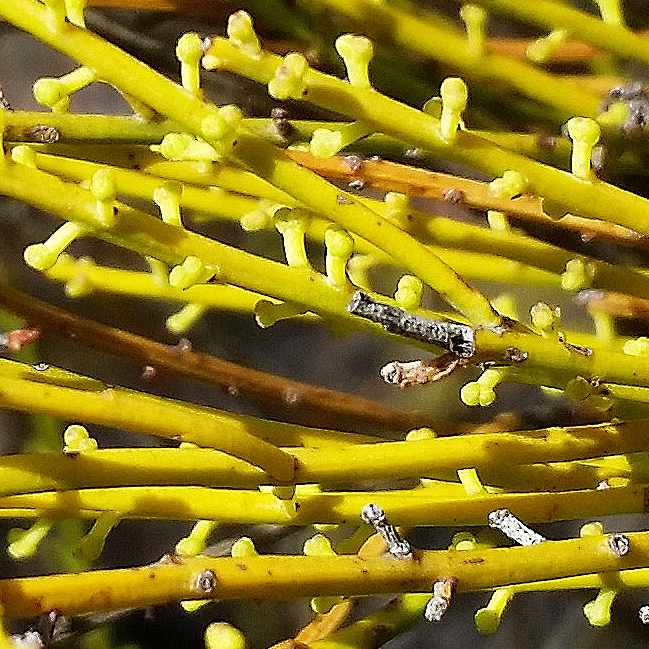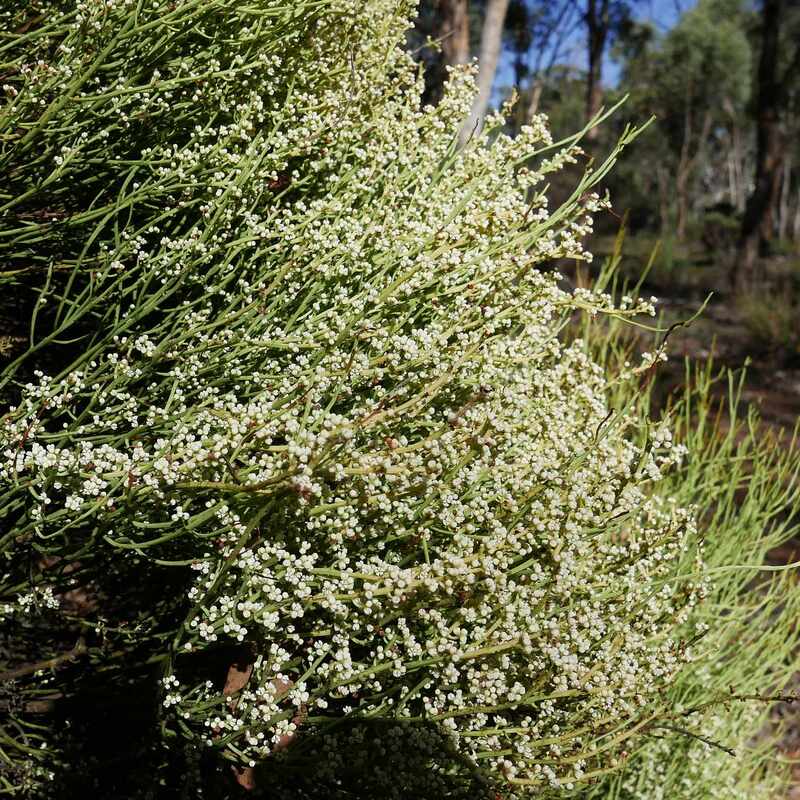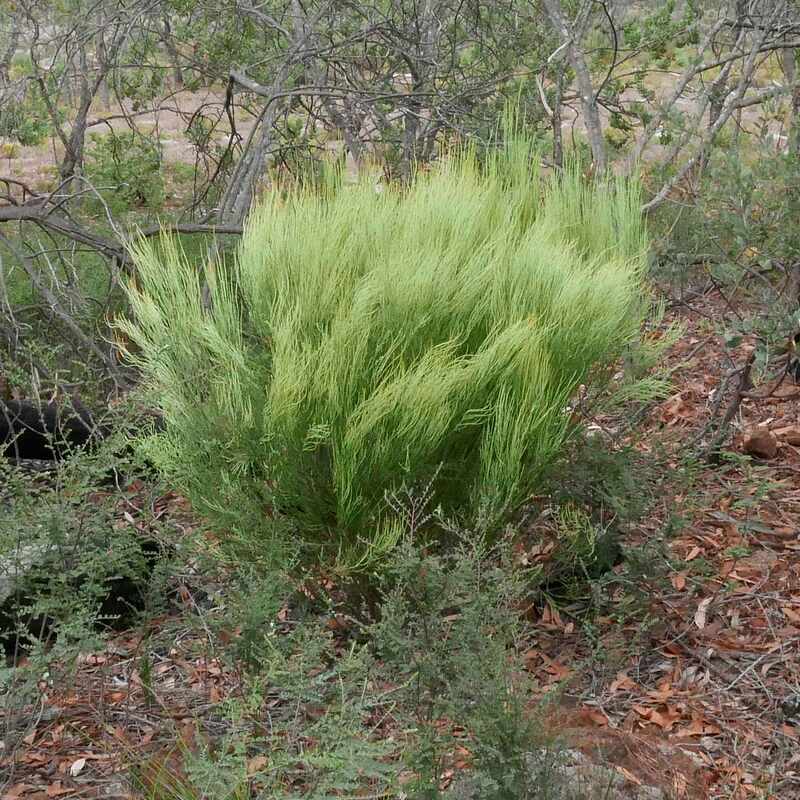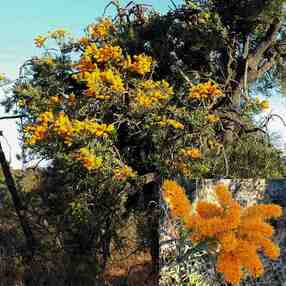 Nuytsia floribunda
Nuytsia floribunda Holoparasites derive all their energy from their hosts without killing them. Plant examples include dodder laurel and orabanche, and there are many animal parasites such as ticks and fleas.
The animal world also has parasitoids, such as wasps whose larvae kill their hosts.
Mistletoes are hemiparasites, which grow on eucalypt and acacia branches, but most hemiparasites feed from their host's roots.
The beautiful Christmas tree Nuytsia floribunda is the largest root hemiparasitise, and has special organs on their roots called haustoria to tap into the sap of host plants. In the 1960’s they caused short circuits in underground power cables until resistant cables were developed.
Sandalwood and quandongs are Santalum genus hemiparasites, which prefer acacias.
Western quandong Santalum acuminatum is a small tree that produces edible nuts covered by a red vitamin C-rich rind that makes wonderful jam. In Foxes Lair it occurs as clumps of small shrubs that have never fruited in the last twenty years. I think that the clumps are clones of a single plant, which have spread from underground root shoots.
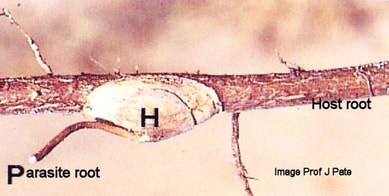 Bell shaped quandong root haustorium on host root
Bell shaped quandong root haustorium on host root Weeping, narrow-leaved bitter quandong, Santalum murryanum occurs on lateritic soils. It has inedible fruit.
Olax and quandongs have bell-shaped root haustoria that attach to the host root and drill into it to connect to the water bearing vessels.
They are very obvious in late spring and summer, with their almost glowing light green soft looking foliage. See them under the salmon gums near the Brockway tree at Yilliminning Rock. The tiny bush tucker 'currants' are very high in vitamin C.
